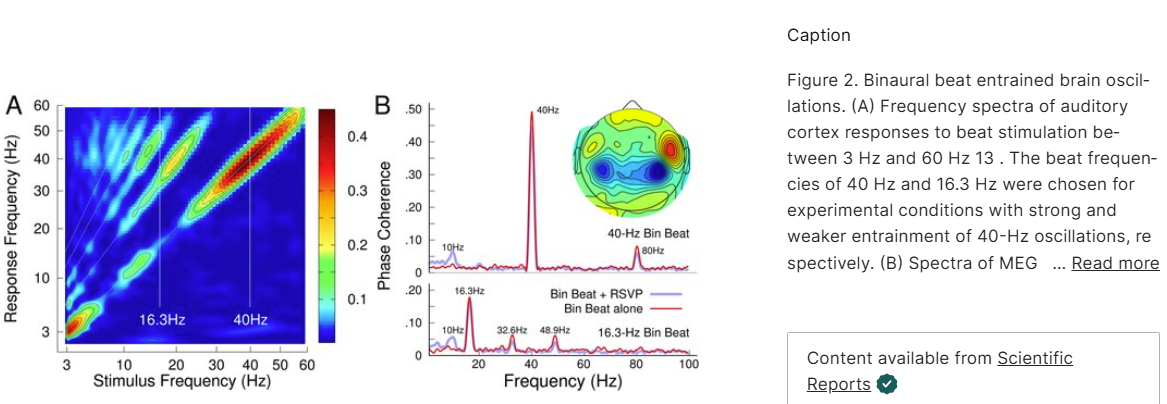
My name is Dr Mark Ashton Smith. I am a cognitive neuroscientist trained at the Center for the Neural Basis of Cognition – a joint program at the University of Pittsburgh and Carnegie Mellon University. For a number of years I was a Lecturer and researcher in the Psychology Department at the University of Cambridge. I am currently a Lecturer in Cognitive Psychology & Neuroscience at the University of Essex Online. (Signup if you are interested in a BPS accredited degree in psychology!) I have been researching cognitive interventions and the principles of effective brain training for two decades. Research in the past few years in computational cognitive neuroscience has identified a set of principles for effective brain training to increase general intelligence which I have synthesized into a scientifically rigorous framework called Trident G theory. You can connect with me here.
Trident G Theory: Explaining General Intelligence
The training protocol is based on the Trident G Theory, a computational‐cognitive-neuroscience framework explaining how the brain strikes a balance between stability (drawing on what it already knows) and flexibility (inventing new solutions). At its heart is a “generative model”—the brain’s prediction engine—that constantly compares expectations with experience to guide thinking, feeling and behaviour.
Picture your mind tuned to a “near-critical” sweet spot, where reliable schemas and creative exploration coexist. In this regime, fluid intelligence (Gf)—our capacity for on-the-fly problem-solving and pattern discovery—blends seamlessly with crystallised intelligence (Gc), the body of facts and skills we’ve accumulated. Layered on top is cognitive resilience (ρ), our knack for bouncing back from errors and stress. Together, these dimensions form what Trident G calls general adaptive intelligence (G): the integrated power to learn, adapt and thrive in novel situations

Trident G Theory
Trident G Training for Increasing IQ & Cognitive Resilience
Our cognitive training protocol is summarised in this diagram. The training can be supplmented by our cognitive coaching services.

I. Capacity Training
Our capacity training is designed to strengthen your brain’s raw processing power—to expand “mental RAM” and sharpen focus. Through engaging, adaptive exercises (think multi-dimensional n-back games), we gradually increase the amount of information you can hold and manipulate in mind. Over time, these drills upregulate key brain networks—especially fronto-parietal and hippocampal circuits—so you can juggle more pieces of information simultaneously.
- Adaptive Difficulty: Each exercise adjusts in real time, keeping you challenged without overwhelming you.
- Relational Memory: Tasks emphasise holding and updating multiple streams of information, mirroring the way we handle complex ideas in everyday life.
- Attention Control: Mixed tasks help you switch focus efficiently and resist distractions.
While standard n-back games typically focus on raw working-memory span and yield only near-transfer (getting better at similar exercises), our n-back games explicitly targets the brain’s relational cognitive maps to promote genuine far-transfer for IQ gains. Strategy training further amplifies the effect.
II. Strategy Training
Our strategy module – available as a 24 session course – teaches you how to think more flexibly and effectively. Rather than simply rehearsing information, you learn powerful problem-solving techniques that can be applied across a wide range of situations:
- Analogical Encoding: Spot underlying patterns by comparing examples side by side—so you extract the “rule” rather than memorise surface details.
- Problem Decomposition: Break down complex problems into manageable steps, then reassemble them into a coherent solution.
- Visual Scaffolds: Use simple diagrams, flowcharts and mind-maps to externalise abstract relations and tap the underlying cognitive maps that unerpin the ‘language of intelligence.’
These strategic also target your hippocampal cognitive maps and turn raw capacity into practical skill. On their own, they can produce quick gains in specific contexts, but without sufficient working-memory “bandwidth,” complex strategies may feel overwhelming.
Capacy-Strategy Synergy for Real-Life IQ
The Power of Cognitive Map Training
Our capacity-strategy training targets the brain’s cognitive-mapping system—the hippocampal–entorhinal network—we teach you to encode complex relationships as multi-dimensional ‘maps.’ This map-based approach unleashes two key benefits:
- Far-Transfer – Learners not only master the trained exercises but also apply those hidden relational patterns to brand-new problems, boosting performance on unpractised fluid-intelligence tests.
- Predictive Inference – Just as a spatial map guides you through a city, a cognitive map lets you navigate abstract ideas, anticipate outcomes and draw analogies across domains.
Emerging evidence shows that map training drives durable gains in reasoning, pattern recognition and everyday problem-solving—far beyond what straight working-memory drills can achieve (Behrens et al., 2018).
When capacity and strategy training are combined, something remarkable happens:
- Stronger Foundations + Smarter Tools
- Capacity drills give you the neural “scaffolding” to hold multiple relations in mind.
- Strategy lessons show you how to organise and apply that information to brand-new problems.
- Unlocking Far Transfer
- You’re no longer just practising the same tasks; you’re learning how to adapt.
- Scientific studies demonstrate that participants who undertake both modules improve not only on trained exercises but also on unpractised fluid-reasoning tests—such as novel pattern problems and matrix tasks.
- Lasting Cognitive Gains
- By exercising the brain’s map-like relational circuits with capacity challenges, and then guiding them with strategic heuristics, we harness hippocampal binding and fronto-parietal control in harmony.
- The result is a flexible thinking toolkit that goes well beyond game-like exercises, boosting your ability to tackle unfamiliar challenges in work, study and everyday life.
Together, our training create a virtuous cycle: greater mental capacity makes strategies easier to deploy, and clearer strategies help you make the most of your expanded capacity—delivering robust, far-transferable improvements in real-world intelligence.
III. Cortical Brainwave Entrainment
Entraining intrinsic rhythms with binaural beats—where two slightly different pure tones presented to each ear generate a perception of a beat at their frequency difference—can precisely drive cortical oscillations across delta, alpha, beta and gamma bands. By aligning these natural rhythms, binaural‐beat stimulation boosts attention, memory consolidation and strategic flexibility, making it an ideal non-invasive adjunct to capacity–strategy training.
How oscillations organise information flow
Nested rhythms coordinate information processing in the brain. Delta, theta and gamma oscillations scaffold distinct memory circuits (cortex, hippocampus, striatum), while their cross-frequency interactions orchestrate encoding, consolidation and retrieval across time. Alpha pulses gate cortical excitability. Each ~100 ms alpha cycle alternates inhibitory troughs (boosting internal integration) with excitatory peaks (enabling external sampling), thereby sculpting the flow of sensory and mnemonic information.
- Delta windows (1–4 Hz) scaffold multi-second schema integration in hippocampal–entorhinal–prefrontal circuits, grouping faster bursts for relational binding.
- Alpha cycles (8–12 Hz) gate cortical excitability every ~100 ms, alternating inhibition (improving internal focus) with brief excitation (opening up to new inputs).
- Beta bursts (13–30 Hz) carry precision-weighting signals that stabilise top-down predictions and decision thresholds.
- Gamma synchrony (30–100 Hz) underpins feature-binding, selective attention and rapid information routing.
Examples
- Schema‐integration drills (3 Hz beats): Learners show richer relational binding when problem-decomposition tasks are performed under 3 Hz binaural‐beat entrainment.
- Logic-gating sessions (10 Hz beats): Pairing dual n-back with 10 Hz beats tightens dlPFC gating windows, speeding up “AND”/“XOR” filtering.
- Decision-threshold tuning (15–20 Hz beats): Alternating beta-band beats refines speed-accuracy trade-offs in rapid decision drills by reinforcing top-down precision bursts.
Key takeaway: Binaural-beat stimulation offers a frequency-specific “dial” for enhancing delta, alpha, beta or gamma oscillations—directly boosting the neural capacities that underpin your capacity–strategy method.
Binaural Beats Are Effective
Research demonstrates that we can target α (8–12 Hz), β (13–30 Hz) or γ (30–100 Hz) networks in isolation by choosing the corresponding beat frequency, opening the door to frequency‐specific enhancement of gating (α), precision control (β) and feature‐binding/attentional (γ) processes. [Ross & Lopez, 2020]

IV. Track Your Gains
Checkpoint Assessments
You can periodically assess your performance to build a five-axis cognitive profile. This lets you—and us—see not only improvements in raw problem-solving, but also how well you recover from setbacks, balance mental stability and flexibility, monitor your own thinking and sustain confidence under challenge.
Our Five Key Metrics
- Fluid Intelligence (g = IQ)
Measures your capacity for novel problem-solving, pattern recognition and abstract reasoning. - Cognitive Resilience (r)
Gauges how quickly you bounce back when stressed or after mistakes, so you stay sharp even under pressure. - Brain Criticality (Phi)
Tracks the dynamic balance between order and creativity in your brain’s networks—the “edge-of-chaos” sweet spot where learning thrives. - Metacognition (χ)
Assesses how well you plan strategies, monitor your understanding and adjust your approach in real time. - Self-Efficacy (η)
Captures your belief in your own ability to meet challenges—an essential fuel for tackling tougher tasks.
Crystallised Learning
We also monitor your mastery of the strategies you learn and your progress on n-back challenges as an index of acquired skills and knowledge.
Why It Matters
By tracking these dimensions, you get an objective demonstration of the gains from your cognitive training using the Trident G capacity-strategy approach. You’ll know when your fluid-intelligence (IQ) gains are solid, when to push harder on resilience drills, whether your brain is truly in the critical sweet spot, how well you’re thinking about your thinking—and, crucially, that you have the confidence to apply these skills in real-world situations.
References
Ashton Smith, M. (2023). The FEP+ Model of General Intelligence. PsyArXiv. https://doi.org/10.31234/osf.io/65gzh
Ashton Smith, M. (2024a). Trident G: Free Energy & Brain Criticality Based Theory of Intelligence & Resilience. PsyArXiv. https://doi.org/10.31234/osf.io/wnre3
Ashton Smith, M. (2024b). Strategy-Capacity Training: An Intervention Method for Effective Far Transfer. PsyArXiv. https://doi.org/10.31234/osf.io/z6fjt
Behrens, T. E. J., Muller, T. H., Whittington, J. C. R., Mark, S., Baram, A. B., Stachenfeld, K. L., & Kurth-Nelson, Z. (2018). What Is a Cognitive Map? Organizing Knowledge for Flexible Behavior. Neuron, 100(2), 490–509. https://doi.org/10.1016/j.neuron.2018.10.002
Cattell, R. B. (1963). Theory of fluid and crystallized intelligence: A critical experiment. Journal of Educational Psychology, 54(1), 1–22. https://doi.org/10.1037/h0046743
Friston, K. (2010). The free-energy principle: a unified brain theory?. Nature Reviews Neuroscience, 11(2), 127–138. https://doi.org/10.1038/nrn2787
Jiang, L., Qiao, K., Sui, D., Zhang, Z., & Dong, H.-M. (2019). Functional criticality in the human brain: Physiological, behavioral and neurodevelopmental correlates. PLOS ONE, 14(3), e0213690. https://doi.org/10.1371/journal.pone.0213690
McGrew, K. S., Schneider, W. J., Decker, S. L., & Bulut, O. (2023). A Psychometric Network Analysis of CHC Intelligence Measures: Implications for Research, Theory, and Interpretation of Broad CHC Scores “Beyond g”. Journal of Intelligence, 11(1), 19. https://doi.org/10.3390/jintelligence11010019
Ross, B., & Lopez, M. D. (2020). 40-Hz Binaural beats enhance training to mitigate the attentional blink. Scientific Reports, 10. https://doi.org/10.1038/s41598-020-63980-y
Shi, J., Kirihara, K., Tada, M., Fujioka, M., Usui, K., Koshiyama, D., Araki, T., Chen, L., Kasai, K., & Aihara, K. (2022). Criticality in the Healthy Brain. Frontiers in Network Physiology, 1. https://doi.org/10.3389/fnetp.2021.755685
Veloso, G. C., & Ty, W. E. G. (2021). The Effects of Emotional Working Memory Training on Trait Anxiety. Frontiers in Psychology, 11, 549623. https://doi.org/10.3389/fpsyg.2020.549623
This research article has demonstrated both IQ (working memory) gains and improved cognitive resilience using the Trident G training app for our IQ-increasing programs:
